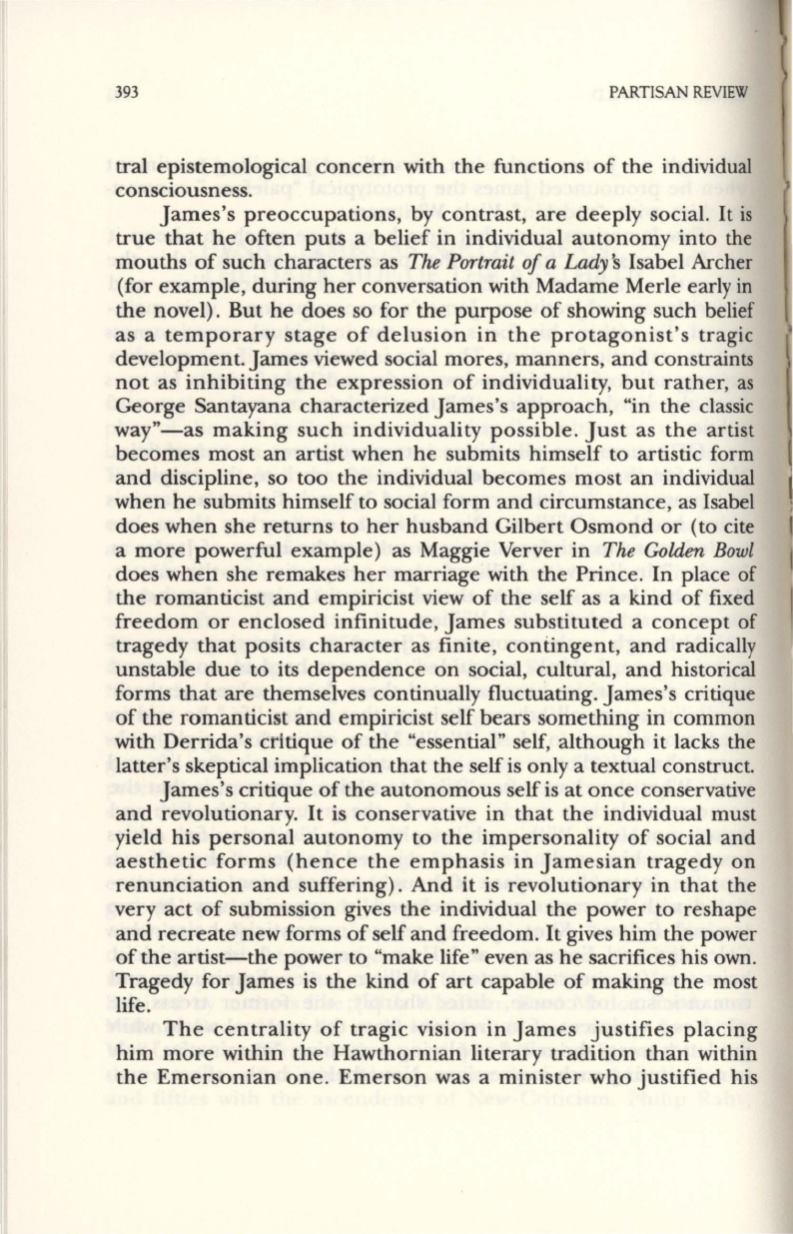
393
PARTISAN REVIEW
tral epistemological concern with the functions of the individual
consciousness.
James's preoccupations, by contrast, are deeply social. It is
true that he often puts a belief in individual autonomy into the
mouths of such characters as
The Portrait of a Lady
s
Isabel Archer
(for example, during her conversation with Madame Merle early in
the novel). But he does so for the purpose of showing such belief
as a temporary stage of delusion in the protagonist's tragic
development. James viewed social mores, manners, and constraints
not as inhibiting the expression of individuality, but rather, as
George Santayana characterized James's approach, "in the classic
way"-as making such individuality possible. Just as the artist
becomes most an artist when he submits himself to artistic form
and discipline, so too the individual becomes most an individual
when he submits himself to social form and circumstance, as Isabel
does when she returns to her husband Gilbert Osmond or (to cite
a more powerful example) as Maggie Verver in
The Golden Bowl
does when she remakes her marriage with the Prince. In place of
the romanticist and empiricist view of the self as a kind of fixed
freedom or enclosed infinitude, James substituted a concept of
tragedy that posits character as finite, contingent, and radically
unstable due to its dependence on social, cultural, and historical
forms that are themselves continually fluctuating. James's critique
of the romanticist and empiricist self bears something in common
with Derrida's critique of the "essential" self, although it lacks the
latter's skeptical implication that the self is only a textual construct.
James's critique of the autonomous self is at once conservative
and revolutionary.
It
is conservative in that the individual must
yield his personal autonomy to the impersonality of social and
aesthetic forms (hence the emphasis in Jamesian tragedy on
renunciation and suffering). And
it
is revolutionary in that the
very act of submission gives the individual the power to reshape
and recreate new forms of self and freedom. It gives him the power
of the artist-the power to "make life" even as he sacrifices his own.
Tragedy for James is the kind of art capable of making the most
life.
The centrality of tragic vision in James justifies placing
him more within the Hawthornian literary tradition than within
the Emersonian one. Emerson was a minister who justified his


